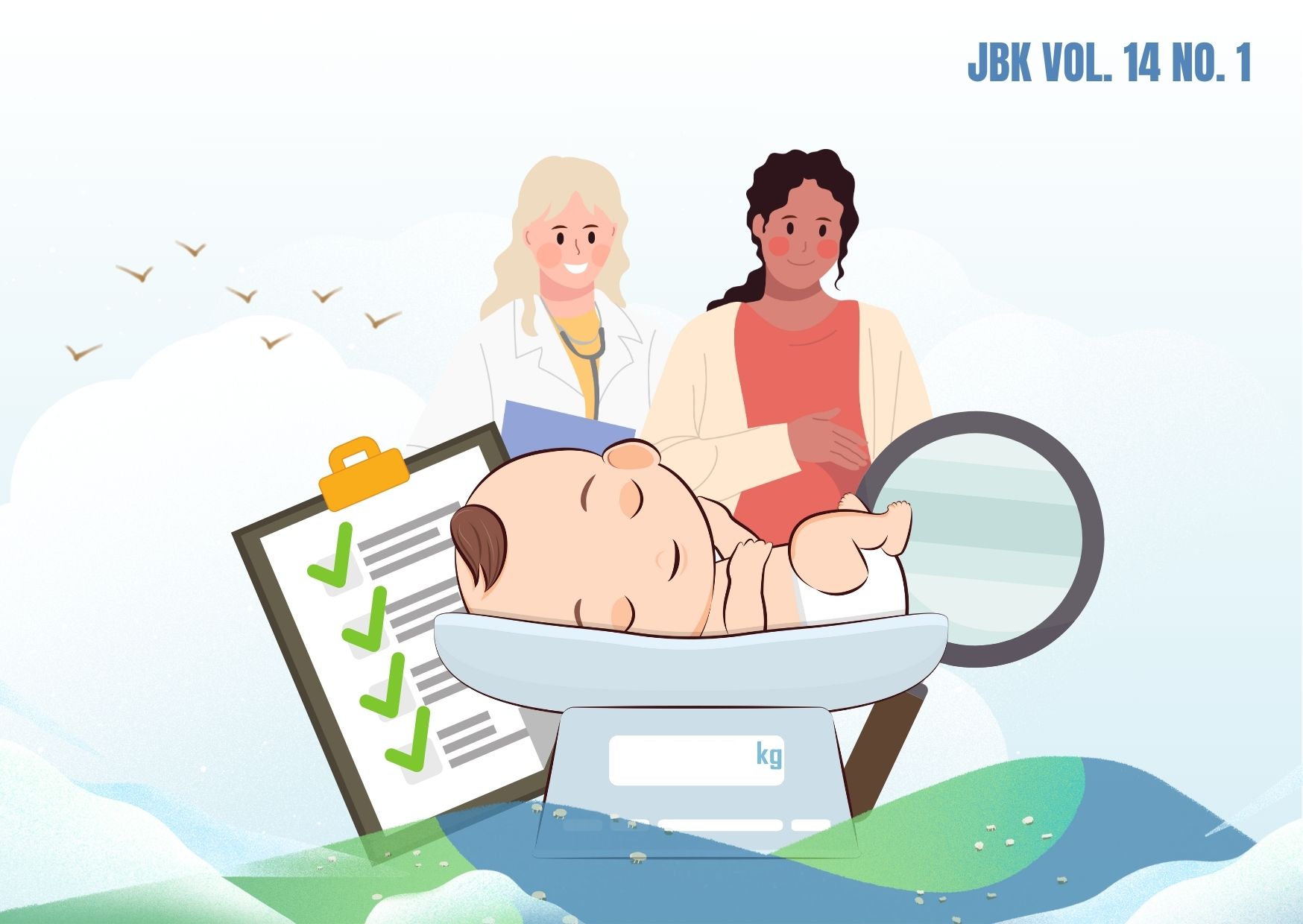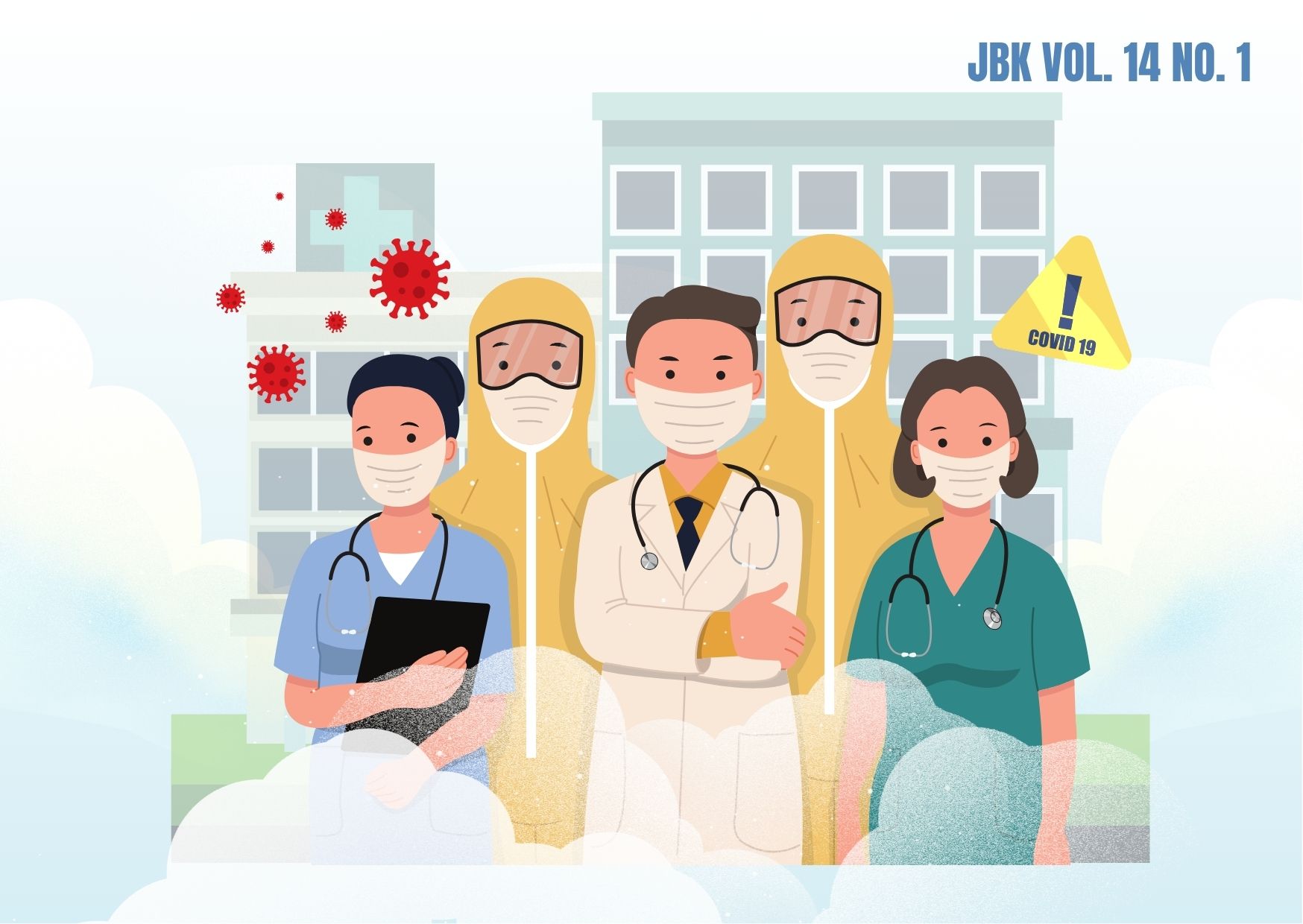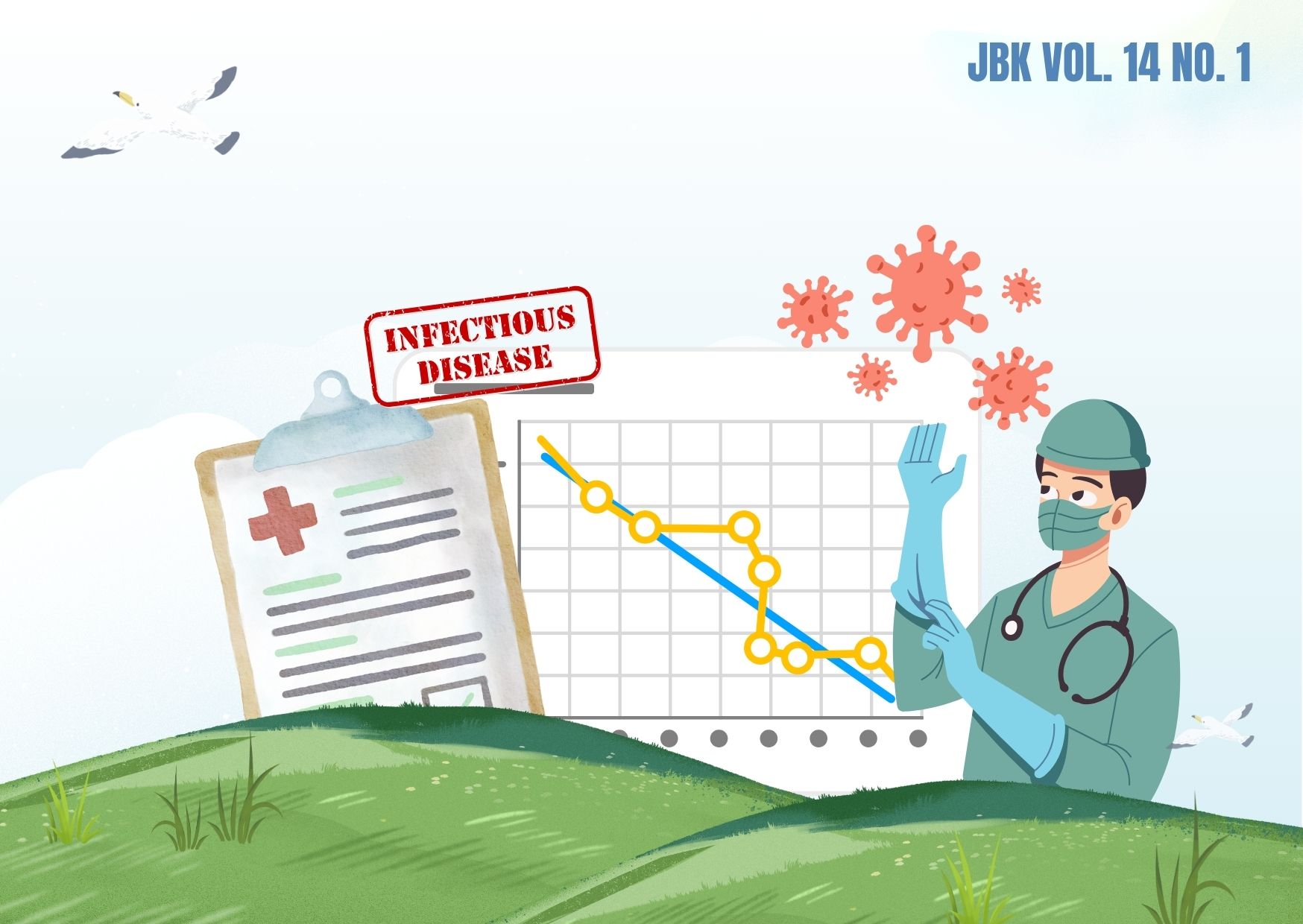THE CORRELATION OF SOCIOECONOMIC AND MOBILITY FACTORS ON COVID-19 MORBIDITY IN SEMARANG CITY

Downloads
Semarang City as the capital of Central Java Province contributes a fairly high number of cases of the COVID-19 virus. This study used a sample of the number of COVID-19 case data in 16 sub-districts in Semarang City. The sampling technique used is purposive sampling with a period of 3 months, namely from October until December 2020. The research aims to find out the impact of social economy and community mobility on the growth of COVID-19 in Semarang City. There is a linkage of spatial factors between sub-districts in the growth of COVID-19 numbers. Spatial influence can show the relationship of influence between sub-districts with each other. In addition, appropriate quantitative approaches are used to obtain a complete view of the expected results through mapping with Geoda software through regression testing analyzed through spatial econometric methods. The process of data collection is carried out by a literature review. This study showed that the model correlated with a high R2 value of 0.7780. All variables show significant numbers in the model. Through policies at the Semarang City level through coordination between sub-districts to achieve prevention goals in the growth rate of COVID-19 numbers of each sub-district. The findings from this study will inform that the effort to a policy of handling COVID-19 must also be carried out continuously and the regulation of large-scale social restrictions (PSBB) in Semarang city is needed.
WHO. Strengthening Preparedness for COVID-19 in Cities and Urban Settings. World Heal Organ [Internet]. 2020;8–9. Available from: https://www.who.int/
Pemantauan Covid-19 Kementerian Kesehatan Republik Indonesia [Internet]. [cited 2022 Feb 16]. Available from: https://pusatkrisis.kemkes.go.id/covid-19-id/
Update: 15 [Internet]. 2020. Available from: https://nasional.kompas.com/read/2021/01/15/16154371/update-15-januari-12818-kasus-harian-covid-19-jawa-barat-tertinggi?page=3
Zona Merah Corona di Jawa Tengah Melonjak Jadi 21, Ini Rinciannya [Internet]. 2021. Available from: https://newssetup.kontan.co.id/
Amboningtyas D, Taunay EGP, Rusmawati Y. Kondisi UMKM di Kota Semarang di Masa Pandemi COVID-19 pada Pertumbuhan Ekonomi Krisis serta Program Pemulihan Ekonomi. Pros Semin Nas Penelit dan Pengabdi 2021 [Internet]. 2021;526–537. Available from: http://prosiding.rcipublisher.org/index.php/prosiding/article/view/185
You H, Wu X, Guo X. Distribution of COVID-19 Morbidity Rate in Association with Social and Economic Factors in Wuhan, China: Implications for Urban Development. Int J Environ Res Public Health [Internet]. 2020;17(10):1–14. Available from: https://doi.org/10.3390/ijerph17103417
Vahedi B, Karimzadeh M, Zoraghein H. Spatiotemporal Prediction of COVID-19 Cases Using Inter- and Intra-County Proxies of Human Interactions. Nat Commun [Internet]. 2021;12(1):1–15. Available from: https://doi.org/10.1038/s41467-021-26742-6
Wang S, Liu Y, Hu T. Examining the Change of Human Mobility Adherent to Social Restriction Policies and Its Effect on COVID-19 Cases in Australia. Int J Environ Res Public Health [Internet]. 2020;17(21):1–17. Available from: https://www.mdpi.com/1660-4601/17/21/7930
Prastomo AD. The Role of Instructional Design for COVID-19 Quarantine Patients in Semarang. KnE Soc Sci [Internet]. 2021;2021:156–162. Available from: http://repository.unika.ac.id/25414/
Rahayu E. Ekonomi Nasional Mulai Meradang karena COVID 19. J Intelijen [Internet]. 2020;1–3. Available from: https://www.printfriendly.com/p/g/WhGzM5
Wati ADA, Khikmah L. Modeling Spatial Error Model (SEM) On Human Development Index (IPM) In Central Java 2018. J Intell Comput Heal Informatics [Internet]. 2020;1(2):50-55. Available from: https://doi.org/10.26714/jichi.v1i2.6341
Paul Elhorst J, Zandberg E, De Haan J, Bank N. The Impact of Interaction Effects among Neighbouring Countries on Financial Reform: A Dynamic Spatial Panel Data Approach. 2011 [cited 2021 Aug 31]; Available from: http://www-sre.wu.ac.at/ersa/ersaconfs/ersa11/e110830aFinal00398.pdf
Priyono TH, Alam MZ, Santoso SH. Pemodelan Pertumbuhan Ekonomi Jawa Timur dengan Pendekatan Ekonometrika Panel Spasial. Media Trend [Internet]. 2019;14(2):259–275. Available from: https://journal.trunojoyo.ac.id/mediatrend/article/view/5192
Lee S, Cho Y-M, Kim S-Y. Mapping mHealth (Mobile Health) and Mobile Penetrations in Sub-Saharan Africa for Strategic Regional Collaboration in mHealth Scale-Up: An Application of Exploratory Spatial Data Analysis. Global Health [Internet]. 2017;13(63):1-11. Available from: https://link.springer.com/article/10.1186/s12992-017-0286-9
Arriani RR, Chotib. The Correlation of SDG 1 and 8 and Spatial Effect of Human Development Index in Central Java. IOP Conf Ser Earth Environ Sci [Internet]. 2021;940(1):1-11. Available from: https://iopscience.iop.org/article/10.1088/1755-1315/940/1/012063/meta
Yabe T, Zhang Y, Ukkusuri S V. Quantifying the Economic Impact of Disasters on Businesses Using Human Mobility Data: A Bayesian Causal Inference Approach. EPJ Data Sci [Internet]. 2020;9(1):1-20. Available from: http://dx.doi.org/10.1140/epjds/s13688-020-00255-6
Li J, He J, Liu Y, Wang D, Rafay L, Chen C, et al. Spatial Autocorrelation Analysis of Multi-Scale Damaged Vegetation in the Wenchuan Earthquake-Affected Area, Southwest China. forests [Internet]. 2019;10:1-21. Available from: https://doi.org/10.3390/f10020195
Jaya IGNM, Tantular B, Zulhanif. Optimalisasi GeoDa dalam Pemodelan dan Pemetaan Penyakit di Kota Bandung. J Peng kep Masy [Internet]. 2018;2(3):1-8. Available from: http://journal.unpad.ac.id/pkm/article/view/19054
Mariani S, Wardono, Masrukan, Fauzi F. The Arcview and GeoDa Application in Optimization of Spatial Regression Estimate. J Theor Appl Inf Technol [Internet]. 2017;95(6):1286–1299. Available from: http://www.jatit.org/volumes/Vol95No6/7Vol95No6.pdf
Susanto J, Welly Udjianto D. Human Capital Spillovers and Human Development Index in Yogyakarta Special Region and Central Java. Int J Innov Econ Dev [Internet]. 2019;5(2):57–64. Available from: http://dx.doi.org/10.18775/ijied.1849-7551-7020.2015.52.2004
Huang Z, Wang P, Zhang F, Gao J, Schich M. A Mobility Network Approach to Identify and Anticipate Large Crowd Gatherings. Transp Res Part B Methodol [Internet]. 2018;114(March 2019):147–170. Available from: https://www.sciencedirect.com/science/article/abs/pii/S0191261517310986
Holmberg I. Mobility Restrictions and Macroeconomic Policymaking in the Great COVID-19 Recession. 2021;1. Available from: https://lup.lub.lu.se/luur/download?func=downloadFile&recordOId=9059770&fileOId=9059778
Astuti SI, Arso SP, Wigati PA. Analisis Ekonomi Regional Kota Semarang. Anal Standar Pelayanan Minimal pada Instal Rawat Jalan di RSUD Kota Semarang [Internet]. 2015;3:103–111. Available from: http://satudata.semarangkota.go.id/adm/file/20180122141957AnalisisEkonomiRegionalKotaSemarang2016.pdf
Tarigan H, Sinaga JH, Rachmawati RR. Dampak Pandemi COVID-19 terhadap Kemiskinan di Indonesia. Pus Sos Ekon dan Kebijak Pertan [Internet]. 2020;(3):457–479. Available from: https://pse.litbang.pertanian.go.id/ind/pdffiles/23-BBRC-2020-IV-1-1-HLT.pdf
Alasan Pemkot Semarang Beri Kelonggaran di Masa PPKM _ Republika Online [Internet]. 2021. Available from: https://www.republika.co.id/berita/qnhng1354/alasan-pemkot-semarang-beri-kelonggaran-di-masa-ppkm-part1
Ghiffari RA. Dampak Populasi dan Mobilitas Perkotaan terhadap Penyebaran Pandemi COVID-19 di Jakarta. Tunas Geogr. 2020;9(1):81–88. Available from: https://doi.org/10.24114/tgeo.v9i1.18622
Copyright (c) 2022 Jurnal Biometrika dan Kependudukan

This work is licensed under a Creative Commons Attribution-NonCommercial-ShareAlike 4.0 International License.
Copyright©2022 Jurnal Biometrika dan Kependudukan (Journal of Biometrics and Population)
This work is licensed under a Creative Commons Attribution-NonCommercial-ShareAlike 4.0 International License.
1. Copyright of all journal manuscripts is held by the Jurnal Biometrika dan Kependudukan.
2. Formal legal provisions to access digital articles of the electronic journals are subject to the provision of the Creative Commons Attribution-ShareAlike license (CC BY-NC-SA), which means that Jurnal Kesehatan Biometrika dan Kependudukan to keep, transfer media/format, manage in the form of databases, maintain, and publish articles.
3. Published manuscripts both printed and electronic are open access for educational, research, and library purposes. Additionally, the editorial board is not responsible for any violations of copyright law.



































